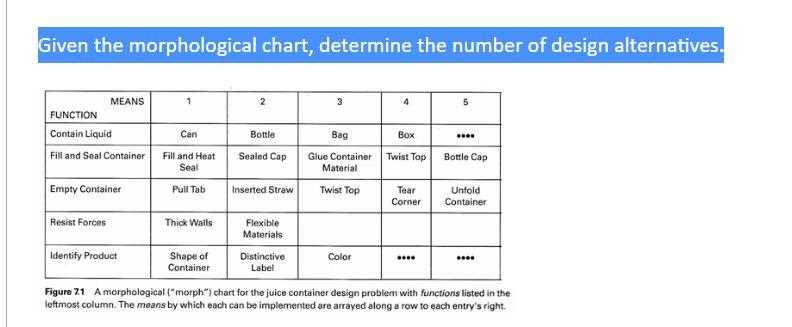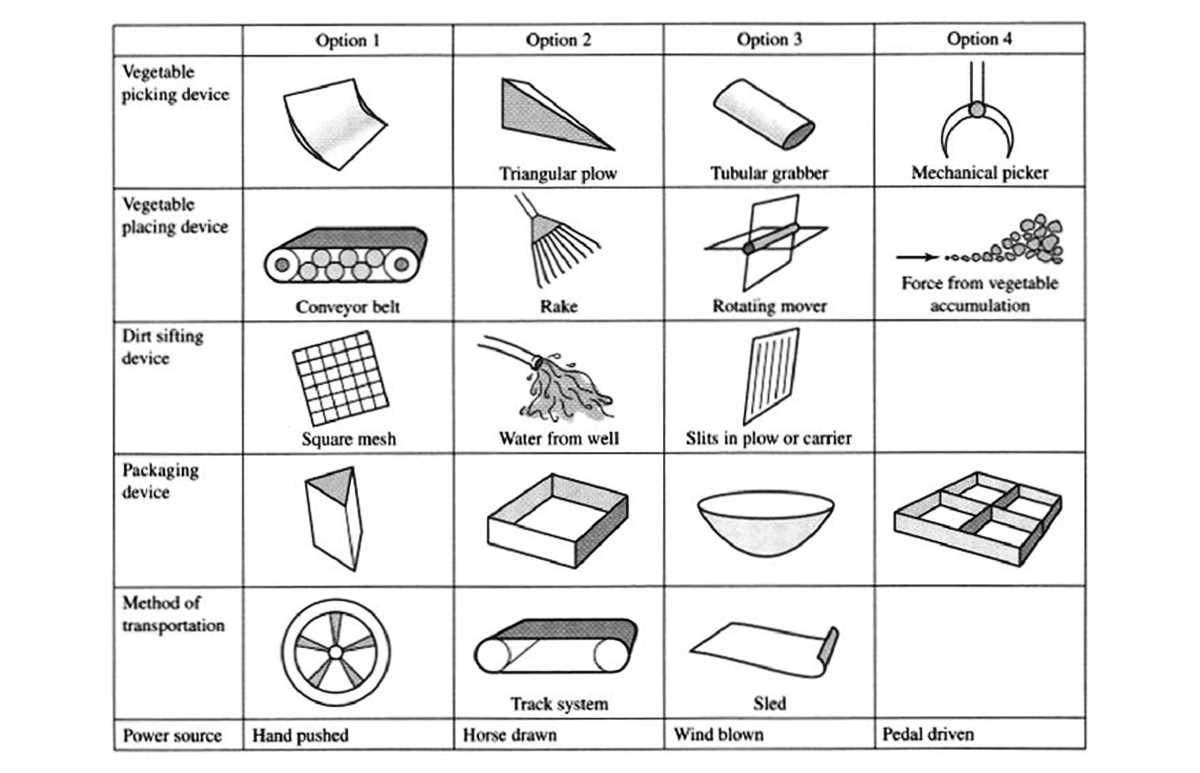A Morph Chart is a graphical model that represents the different forms and variations of a word or a set of words. It provides a clear and organized solution for exploring the multifunctionality of morphology. Each element of the chart displays a specific function or characteristic of the word, allowing users to easily analyze and understand its structure.
What is a Morph Chart?
The Concept
The concept of a morph chart is based on the idea that words can be broken down into smaller units called morphemes. These morphemes can be prefixes, suffixes, or roots, and they carry meaning and grammatical information. By analyzing the morphemes in a word, linguists can gain insights into its structure and how it functions within a sentence.
The Model
A morph chart is designed as a visual model that displays the different morphological components of a language. It typically consists of a table with rows representing the different morphemes and columns representing the different grammatical or semantic features. Each cell in the table represents a possible combination of a morpheme and a feature.
The Chart
The chart is filled out by linguists based on their analysis of the language’s morphology. They identify the different morphemes and their associated features, and then fill in the corresponding cells in the chart. This allows them to see the patterns and variations in the language’s morphology and better understand how words are formed and organized.
Benefits
Overall, a morph chart is a valuable tool in the field of linguistics as it allows for a systematic analysis of a language’s morphology, providing insights into its structure and variation.
One of the main advantages of using a Morph Chart is its ability to organize and display the different morphological variations of a particular word or concept. By visually representing the various forms and functions of morphs, a Morph Chart allows linguists to easily compare and contrast the different morphological patterns.
In addition, a Morph Chart serves as a useful educational tool in teaching morphology to students. Its visual nature makes it easier for learners to grasp the complexities of word formation and recognize the patterns and structures within a language.
Furthermore, the use of a Morph Chart facilitates the creation of a morphological model, which can be used as a reference for further linguistic analysis. Linguists can refer to the morphological model while studying different languages or investigating the morphological aspects of a specific language.
How to Create a Morph Chart?

In order to create a morph chart, one needs to understand the basic concept of morphology and the different variations of morphs. A morph is the smallest unit of language that carries meaning and can be combined with other morphs to form words. Morphology is the study of how these morphs combine and interact with each other to create words and their functionality.
Once the different morphs have been identified, they can be organized and visually represented in a chart format. The chart can have different columns representing the morphs and their variations, and rows representing the different functions or meanings that these morphs can have. This allows for a clear and organized representation of the relationships between different morphs and their functionalities.
Once the morph chart is created, it can be used as a tool for analyzing and studying morphology. It allows for a visual representation of the different morphs and their functions, making it easier to identify patterns and relationships. It can also be used to compare and contrast different languages or dialects, highlighting the similarities and differences in their morphological structures.
Morphology is the branch of linguistics that studies the structure and formation of words. It explores how words are formed from smaller units called morphemes, which are the smallest meaningful units in a language. The design of complex morphological systems can be difficult to comprehend due to the vast amount of morphological variation that exists in different languages.
Applications of morph charts in linguistics include language documentation, language revitalization, and language learning. Morph charts can be used to analyze the morphological structure of endangered languages, which can aid in their preservation and revitalization. Additionally, morph charts can help language learners understand the structure of a language and learn new words more effectively.
Examples of morph charts in linguistic analysis include the analysis of inflectional and derivational morphology, the study of morphological alternations, and the exploration of morphological typology. Morph charts can also be used to compare and contrast different morphological systems across languages and identify similarities and differences in their morphology.
In comparison with other linguistic tools, morph charts provide a visual and systematic representation of the morphology of a language. This makes it easier to understand and analyze the complex relationships and patterns within a language’s morphology. Other linguistic tools, such as word lists or grammatical rules, may not capture the full complexity and variation of a language’s morphology.
Applications of Morph Charts in Linguistics
Morph charts are visual tools that are widely used in the field of linguistics to analyze the morphology of languages. They help linguists understand the intricate design and functionality of morphemes, which are the smallest units of meaning in a language. By creating a morph chart, linguists can visually represent and organize the morphological rules and patterns of a language.
Morph charts provide a systematic approach to studying the morphological structure of languages. They allow linguists to identify and analyze the various morphemes present in a language, such as prefixes, suffixes, and root words. This enables them to gain insights into the underlying concepts and rules that govern the formation of words in a language.
One key application of morph charts in linguistics is the analysis of word formation processes. Linguists can use morph charts to examine how words are formed by combining different morphemes and how morphological changes occur in different linguistic contexts. Morph charts can also be used to study the historical development of languages and track changes in word formation patterns over time.
Another application of morph charts is in language teaching and learning. By using morph charts, language educators can help students understand the morphological structure of a language more efficiently. They can use morph charts as visual aids to illustrate the relationships between morphemes and to demonstrate how different morphemes contribute to the meaning and function of words.
Furthermore, morph charts can be used to develop computational models and algorithms for natural language processing tasks. By analyzing the morphological patterns of a language, linguists can create morphological models that can be used in various language processing applications, such as machine translation, text-to-speech synthesis, and information retrieval systems.
Examples of Morph Charts in Linguistic Analysis

One example of how morph charts can be used in linguistic analysis is the study of word formation. Linguists can create a morph chart to analyze the different ways in which words can be formed, such as through affixation, compounding, or derivation. The chart can include different morphemes, their meanings, and their combinations to form new words.
Another example is the analysis of inflectional morphology. Morph charts can be used to analyze the different grammatical features that can be expressed through inflection, such as tense, number, gender, or case. The chart can include the different inflectional endings or suffixes, along with their functions and the variations they can have depending on the grammatical context.
Comparing Morph Charts with Other Linguistic Tools
The functionality of a morph chart lies in its simplicity and organization. Unlike other tools that may overwhelm users with technical terminology and intricate diagrams, a morph chart presents information in a visually appealing and easily comprehensible format. It allows linguists to quickly identify and analyze the different morphological elements, making it an efficient tool in linguistic research.
Another advantage of a morph chart is its flexibility. Linguistic models and concepts may vary from language to language, but the basic principles of morphology remain the same. A morph chart can be adapted and customized to suit the specific needs and characteristics of any language. It provides a framework that can be easily modified and expanded to accommodate the unique morphology of different languages.
Limitations of Using a Morph Chart
One limitation is the design of the chart itself. Creating a morph chart requires careful consideration of the categories and options included. If the chart is not designed properly, it may not accurately capture the full range of morphological possibilities. Additionally, the chart may become complex and difficult to navigate if there are too many categories or options.
Another limitation is the functionality of the chart. While a morph chart can provide a visual representation of morphological concepts, it may not be able to capture the complexity and intricacies of a particular language. This can be especially true for languages with highly complex morphological systems or unusual morphological patterns.
Lastly, the morph chart relies on the accuracy and completeness of the data used to create it. If the linguistic data is inaccurate or incomplete, it may lead to incorrect or misleading conclusions. Therefore, it is essential for researchers to ensure the reliability of the data before using a morph chart for linguistic analysis.

I’m Lena Adams—a product of an unconventional upbringing in the African wilderness. My father, a daring explorer of African wildlife, sparked my fascination with reptiles, a passion that intertwined with the tragic loss of my mother during an expedition, leaving an indelible mark on my life. Driven to understand the creatures that captivated my parents, I embarked on my journey, sharing insights about reptiles, frogs, and lizards on my website. Through my explorations and conservation efforts, I honour my family’s legacy while seeking connections—to the creatures, nature, and the mother whose presence I yearn to understand.
